Incredible Historical Coincidences – Too Strange to be True?
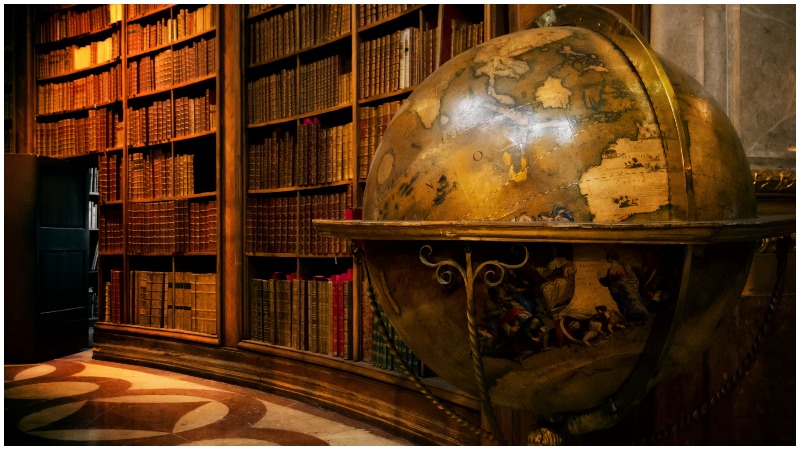
Most people are aware of strange or wonderful coincidences in their lives, like a chance meeting with someone from the same area where you grew up while travelling, for instance.
Coincidences are a part of the human experience. But some historical coincidences are particularly strange – almost too strange to be true. And yet, they apparently are. Here are just a few.
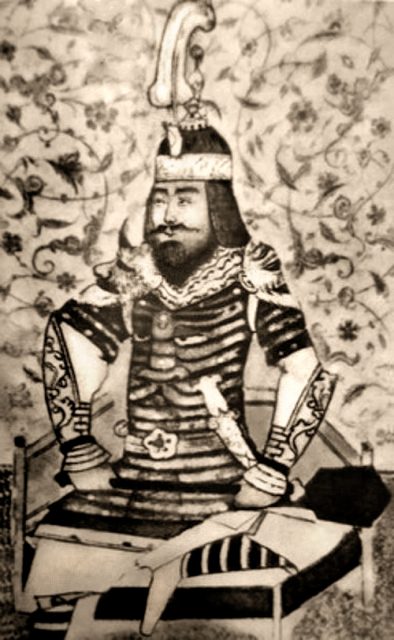
Portrait of Timur. Thumbnail XV century. Perhaps a copy of an earlier original.
His aim was to restore the great Mongol empire of Genghis Khan, who had died over a century earlier in 1227, and referred to himself as “the Sword of Islam.” He was buried in a mausoleum in Samarkand, but his body was exhumed in 1941 and examined by Mikhail Gerasimov, a Soviet anthropologist.
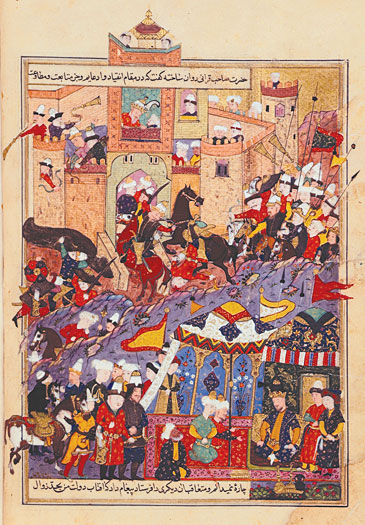
Timur commanding the Siege of Balkh.
Allegedly, Timur’s tomb was inscribed with the phrase – “When I rise from the dead, the world shall tremble” – and a second inscription was found on his casket: “Whomsoever disturbs my tomb shall unleash an invader more terrible than I.” The coincidence?
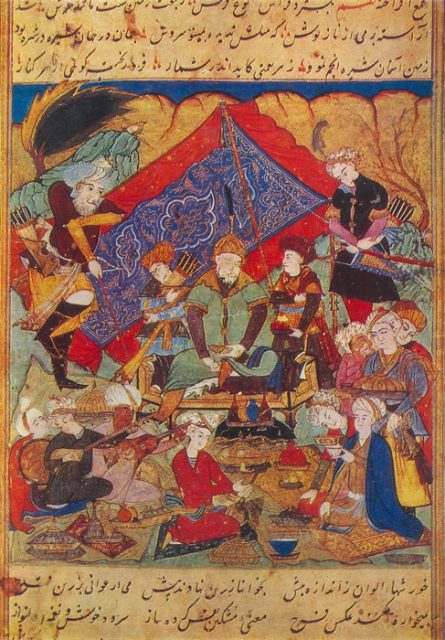
Emir Timur feasts in the gardens of Samarkand.
Adolf Hitller’s forces invaded the Soviet Union three days later as part of Operation Barbarossa, which was the largest military invasion in history. A few days before the Soviet victory at the Battle of Stalingrad in 1942, Timur was re-buried, in a full Islamic ritual.
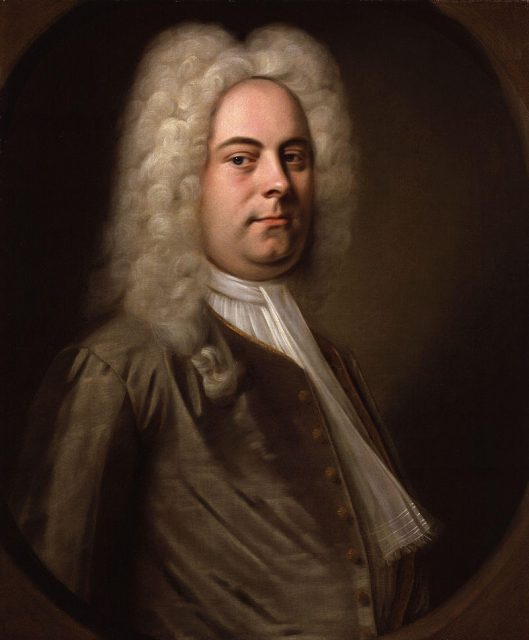
George Frideric Handel.
He is famous for his operas, organ concertos, anthems and oratorios, but his most well known work is certainly Messiah, which he composed n 1742. Having spent almost 50 years in England, Handel died in London as a rich and respected man, and was given full state honors with a burial in Westminster Abbey.
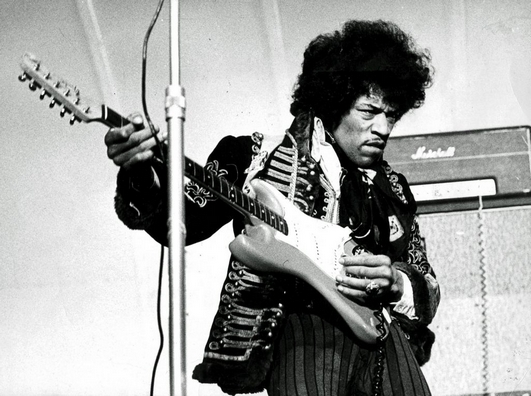
Jimi Hendrix, 1967.
Fast-forward 200 years later, again to London, and another talented musician named Jimi Hendrix. Hendrix was born in Seattle, Washington in 1942, and moved to London in 1966 where, with the production help of Chas Chandler, he formed the band the Jimi Hendrix Experience, and in 1967 released his famous song “Purple Haze.”
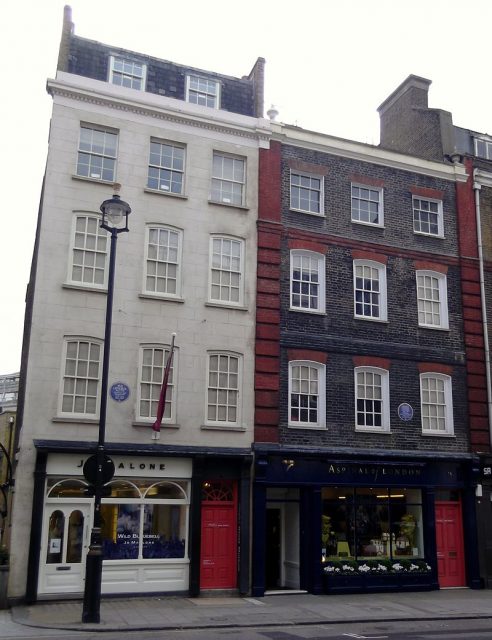
23 and 25 Brook Street, Mayfair, London. The upper floors house the museum. Photo by DAVID HOLT – Flickr CC By SA 2.0
After leaving London for 6 months, Hendrix moved back, in 1969, and in with his girlfriend to her apartment at 23 Brock St. The coincidence? George Frederic Handel had lived at number 25. The building is now the Handel & Hendrix in London museum.
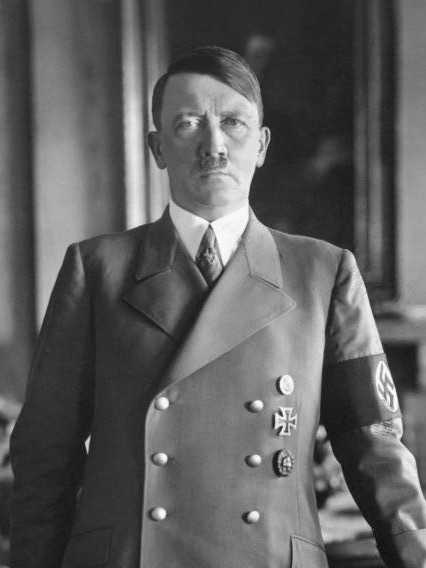
Portrait of Adolf Hitler. Photo by Bundesarchiv, Bild 183-H1216-0500-002 / CC-BY-SA
Adolf Hitler, Josip Broz Tito, Leon Trotsky, and Joseph Stalin all resided in Vienna during the summer of 1913. Hitler, believed to have lived in Vienna since 1908, was struggling to make a living as a painter.

Joseph Stalin.
Stalin spent about a month in the city, wrote on Marxism, and met with Russian revolutionary Trotsky, who lived in Vienna for about 7 years and launched the newspaper Pravda – which translates as The Truth. Tito, a Yugoslav communist revolutionary and later political leader, worked at as a machinist a local Daimler factory and became active in the local labor movement.
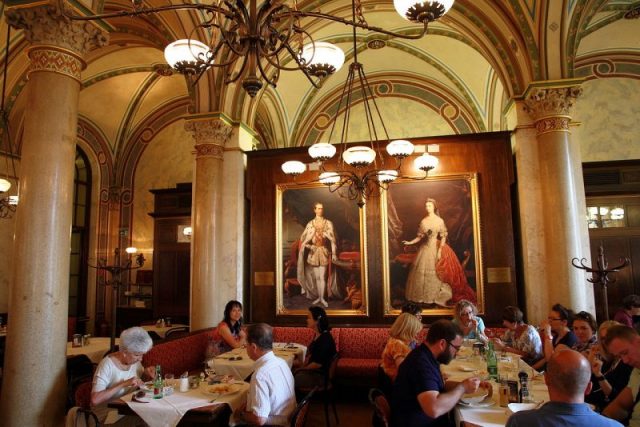
Cafe Central in Vienna – portraits of Empress Elisabeth of Austria and Franz Joseph I of Austria. Photo by Clayton Tang CC BY-SA 3.0
Hitler, Trotsky, Tito and Stalin were all patrons of Café Central (Hitler and Trotsky were regulars), which closed at the end of the Second World War. It reopened in 1975, and is now a popular tourist spot.
Especially when those travels were met with disaster.
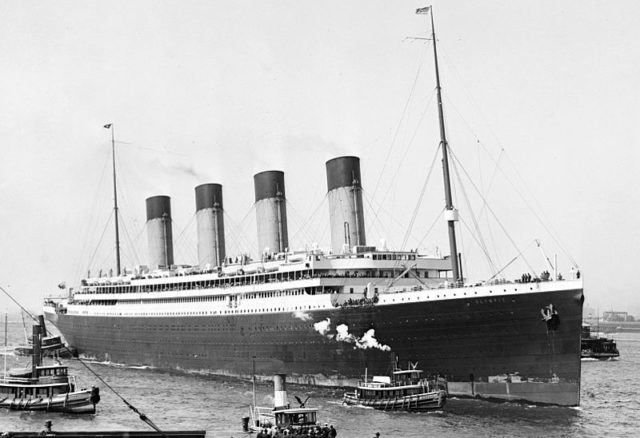
RMS Olympic.
In 1911, she was on board the luxury ship RMS Olympic as a stewardess when it collided with a British war ship.
There were no fatalities, and Olympic was able to make it to port without sinking.

Violet Jessop, aka “Miss Unsinkable.”
Undeterred by this experience, Jessup boarded RMS Titanic in 1912, again as a stewardess.
The fate of the Titanic is well known, and Jessup was one of the survivors of the devastating event.
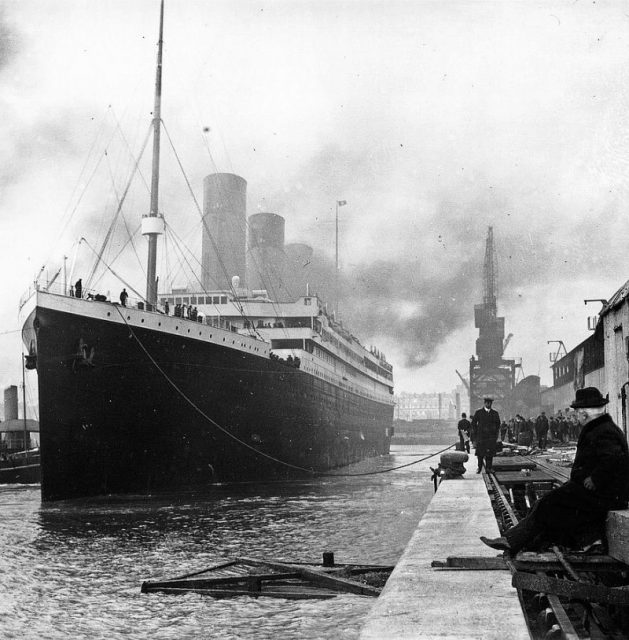
RMS Titanic.
In 1916, she took to the sea again, this time as a stewardess for the British Red Cross aboard HMHS Britannic.
The vessel had been converted to a hospital ship, but sank in the Aegean Sea after an explosion, taking 30 lives with it.
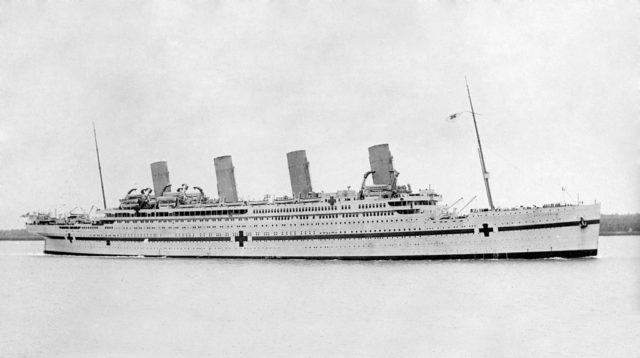
HMHS Britannic seen during World War I.
Jessup, while jumping out of her lifeboat to avoid being dragged until the boat’s propellers, suffered a head injury.
She returned to work for the White Star Line in 1920, in defiance of her previous experiences, and was often called “Miss Unsinkable.”
He was tidying up in an alley when a baby fell out of a window four storys up.
It landed on Figlock’s head and shoulders and, while they were both somewhat injured, the baby girl survived.

Street sweeper Joseph Figlock turned out to be very good at catching falling babies.
A year later, again while sweeping out an alley, another child – this time a boy – fell again from a window.
As before, the baby landed on Figlock, with a similar, and rather happy, result.
Her distraught brother took it upon himself to avenge his sister’s broken heart and defend his family’s honor.

The bullet fired by the jilted girl’s brother did kill Ziegland in the end – twenty years later.
He shot at Ziegland, but only grazed his face; the bullet instead hit a nearby tree. Nonetheless, the brother, believing he had killed Ziegland, further intensified his family’s grief and took his own life as well.
20 years later, Ziegland opted to cut down the tree in which the bullet had remained lodged. In order to speed up the process, he used dynamite.
While the resulting explosion did, in fact, take down the tree, it also discharged the bullet straight at Ziegler’s head, killing him. Revenge may not have been quick, but it was obtained in the end.
The white Portland stone grave markers each contain the national emblem or regimental badge of each casualty, as well as their rank, name, unit, date of death and age.
Tragically, these cemeteries are all too easy to find.
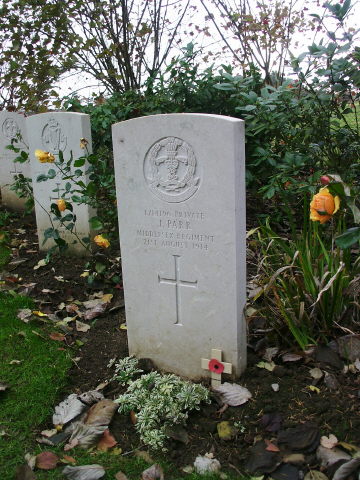
The grave of John Parr in St Symphorien cemetery. Photo by Simon at webmatters.net CC BY SA 2.5
The first British soldier killed by enemy action during the First World War was a young Private by the name of John Henry Parr. He was born in 1897 Finchley, now part of London, the youngest of 11 children.
He was killed by German rifle fire on August 21, 1914 in the village of Obourg, just north east of Mons, Belgium.
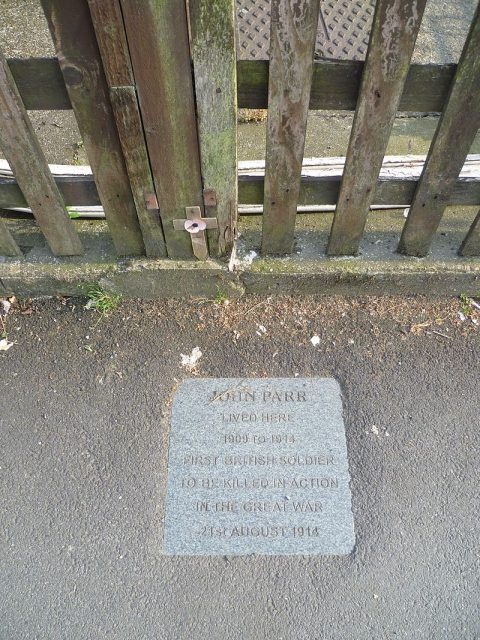
The plaque to Parr’s memory in Lodge Lane, Finchley. Photo by Philafrenzy London CC BY-SA 4.0
The last British soldier killed during the First World War was Private George Edwin Ellison.
He was born in 1878 in Leeds, England, and, having already served in the British Army, joined up again at the start of the war. He was killed, at the age of 40, while on patrol near Mons on November 11, 1918, just an hour and a half before the Armistice came into effect.
Source: https://www.thevintagenews.com/2018/09/07/historical-coincidences/
[/size]

Most people are aware of strange or wonderful coincidences in their lives, like a chance meeting with someone from the same area where you grew up while travelling, for instance.
Coincidences are a part of the human experience. But some historical coincidences are particularly strange – almost too strange to be true. And yet, they apparently are. Here are just a few.
The Curse of Timur
Timur, also known as Temurlane, or Amir Timur, was a Turco-Mongol conqueror, and first ruler of the Timurid dynasty. He lived from 1336 to 1405, and ruled from 1370 until his death.
Portrait of Timur. Thumbnail XV century. Perhaps a copy of an earlier original.
His aim was to restore the great Mongol empire of Genghis Khan, who had died over a century earlier in 1227, and referred to himself as “the Sword of Islam.” He was buried in a mausoleum in Samarkand, but his body was exhumed in 1941 and examined by Mikhail Gerasimov, a Soviet anthropologist.

Timur commanding the Siege of Balkh.
Allegedly, Timur’s tomb was inscribed with the phrase – “When I rise from the dead, the world shall tremble” – and a second inscription was found on his casket: “Whomsoever disturbs my tomb shall unleash an invader more terrible than I.” The coincidence?

Emir Timur feasts in the gardens of Samarkand.
Adolf Hitller’s forces invaded the Soviet Union three days later as part of Operation Barbarossa, which was the largest military invasion in history. A few days before the Soviet victory at the Battle of Stalingrad in 1942, Timur was re-buried, in a full Islamic ritual.
Unlikely Neighbors
George Frideric Handel (1685-1759) was a German-born composer who spent the bulk of his career living in London, England.
George Frideric Handel.
He is famous for his operas, organ concertos, anthems and oratorios, but his most well known work is certainly Messiah, which he composed n 1742. Having spent almost 50 years in England, Handel died in London as a rich and respected man, and was given full state honors with a burial in Westminster Abbey.

Jimi Hendrix, 1967.
Fast-forward 200 years later, again to London, and another talented musician named Jimi Hendrix. Hendrix was born in Seattle, Washington in 1942, and moved to London in 1966 where, with the production help of Chas Chandler, he formed the band the Jimi Hendrix Experience, and in 1967 released his famous song “Purple Haze.”

23 and 25 Brook Street, Mayfair, London. The upper floors house the museum. Photo by DAVID HOLT – Flickr CC By SA 2.0
After leaving London for 6 months, Hendrix moved back, in 1969, and in with his girlfriend to her apartment at 23 Brock St. The coincidence? George Frederic Handel had lived at number 25. The building is now the Handel & Hendrix in London museum.
Vienna’s Bad Boys?
Vienna, Austria, is known for its culture, Spanish Riding School, and opulent Carnival. But it is also known as being the former temporary home of some of history’s worst offenders. And they happened to each live in Vienna at the same time.
Portrait of Adolf Hitler. Photo by Bundesarchiv, Bild 183-H1216-0500-002 / CC-BY-SA
Adolf Hitler, Josip Broz Tito, Leon Trotsky, and Joseph Stalin all resided in Vienna during the summer of 1913. Hitler, believed to have lived in Vienna since 1908, was struggling to make a living as a painter.

Joseph Stalin.
Stalin spent about a month in the city, wrote on Marxism, and met with Russian revolutionary Trotsky, who lived in Vienna for about 7 years and launched the newspaper Pravda – which translates as The Truth. Tito, a Yugoslav communist revolutionary and later political leader, worked at as a machinist a local Daimler factory and became active in the local labor movement.

Cafe Central in Vienna – portraits of Empress Elisabeth of Austria and Franz Joseph I of Austria. Photo by Clayton Tang CC BY-SA 3.0
Hitler, Trotsky, Tito and Stalin were all patrons of Café Central (Hitler and Trotsky were regulars), which closed at the end of the Second World War. It reopened in 1975, and is now a popular tourist spot.
The Unsinkable Violet Jessop
An ocean liner nurse and stewardess, Violet Jessop certainly had some good tales to tell of her travels.Especially when those travels were met with disaster.

RMS Olympic.
In 1911, she was on board the luxury ship RMS Olympic as a stewardess when it collided with a British war ship.
There were no fatalities, and Olympic was able to make it to port without sinking.

Violet Jessop, aka “Miss Unsinkable.”
Undeterred by this experience, Jessup boarded RMS Titanic in 1912, again as a stewardess.
The fate of the Titanic is well known, and Jessup was one of the survivors of the devastating event.

RMS Titanic.
In 1916, she took to the sea again, this time as a stewardess for the British Red Cross aboard HMHS Britannic.
The vessel had been converted to a hospital ship, but sank in the Aegean Sea after an explosion, taking 30 lives with it.

HMHS Britannic seen during World War I.
Jessup, while jumping out of her lifeboat to avoid being dragged until the boat’s propellers, suffered a head injury.
She returned to work for the White Star Line in 1920, in defiance of her previous experiences, and was often called “Miss Unsinkable.”
Right Place at the Right Time. Twice!
In October of 1938, Joseph Figlock was a street sweeper in Detroit, Michigan.He was tidying up in an alley when a baby fell out of a window four storys up.
It landed on Figlock’s head and shoulders and, while they were both somewhat injured, the baby girl survived.

Street sweeper Joseph Figlock turned out to be very good at catching falling babies.
A year later, again while sweeping out an alley, another child – this time a boy – fell again from a window.
As before, the baby landed on Figlock, with a similar, and rather happy, result.
Revenge or Karma?
Henry Ziegland of Honey Grove, Texas, was a bit of a heart-breaker, according to legend. In 1893 he broke up with his girlfriend, who subsequently took her own life, leaving her family devastated.Her distraught brother took it upon himself to avenge his sister’s broken heart and defend his family’s honor.

The bullet fired by the jilted girl’s brother did kill Ziegland in the end – twenty years later.
He shot at Ziegland, but only grazed his face; the bullet instead hit a nearby tree. Nonetheless, the brother, believing he had killed Ziegland, further intensified his family’s grief and took his own life as well.
20 years later, Ziegland opted to cut down the tree in which the bullet had remained lodged. In order to speed up the process, he used dynamite.
While the resulting explosion did, in fact, take down the tree, it also discharged the bullet straight at Ziegler’s head, killing him. Revenge may not have been quick, but it was obtained in the end.
Neighbors For Eternity
The Commonwealth War Graves Commission cemeteries that dot Europe are unmistakable.The white Portland stone grave markers each contain the national emblem or regimental badge of each casualty, as well as their rank, name, unit, date of death and age.
Tragically, these cemeteries are all too easy to find.

The grave of John Parr in St Symphorien cemetery. Photo by Simon at webmatters.net CC BY SA 2.5
The first British soldier killed by enemy action during the First World War was a young Private by the name of John Henry Parr. He was born in 1897 Finchley, now part of London, the youngest of 11 children.
He was killed by German rifle fire on August 21, 1914 in the village of Obourg, just north east of Mons, Belgium.

The plaque to Parr’s memory in Lodge Lane, Finchley. Photo by Philafrenzy London CC BY-SA 4.0
The last British soldier killed during the First World War was Private George Edwin Ellison.
He was born in 1878 in Leeds, England, and, having already served in the British Army, joined up again at the start of the war. He was killed, at the age of 40, while on patrol near Mons on November 11, 1918, just an hour and a half before the Armistice came into effect.
Source: https://www.thevintagenews.com/2018/09/07/historical-coincidences/
[/size]








 by
by 

 61-BLUES
61-BLUES
